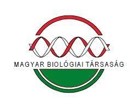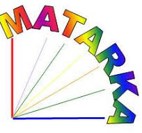Tájszintű és növényzeti változók hatása szántók és gyepek pollinátor közösségeire
Absztrakt
Az ökoszisztéma kutatások egyik fontos területe az állatok általi növényi beporzás (pollináció) mint szabályozó szolgáltatás. A mezőgazdasági művelés miatt rohamosan elszegényedő pollinátor (elsősorban méh- és zengőlégy) közösségek vizsgálata ezért kiemelten fontos. Kutatásunkban különböző táji és növényzeti változók hatását vizsgáltuk szántók és gyepek pollinátor közösségeire erdélyi mintaterületeken, május-július hónapokban (2012). Az észlelt pollinátor csoportok egyedszámát a topográfiai komplexitás, területi heterogenitás és fás borítottság mint környezeti, és a virágos növények fajszáma, valamint a virágszám mint növényzeti változók függvényében, általános lineáris kevert modellekkel elemeztük. Gyepeken több vadméhet és lepkét, míg a szántókon több poszméhet és zengőlegyet figyeltünk meg. Nagyobb fás borítottságú területeken nagyobb lepkeabundanciát tapasztaltunk. Alacsonyabb topográfiai komplexitású területeken szignifikánsan magasabb volt az észlelt lepkék egyedszáma, míg a területi heterogenitás nem okozott szignifikáns eltérést. A parlagokon a legtöbb pollinátor csoport abundanciája magas volt, míg a tarlókon a többi kultúrához képest alacsony. Eredményeink rámutatnak a táji környezet és a területek virágos flórájának együttes fontosságára a pollinátorok élőhely használatában.
Hivatkozások
Báldi, A. (szerk.) (2011): Biodiverzitás és ökoszisztéma szolgáltatás. – Magyar Tudomány 7: 770–801.
Balvanera, P., Pfi sterer, A. B., Buchmann, N., Jing-Sen, He., Nakashizuka, T., Raffaelli, D. & Schmid, B. (2006): Quantifying the evidence for biodiversity effects on ecosystem functioning and services. – Ecology letters 9: 1146–1156.
Basilio, A., Medan, D., Torretta, J. P. & Bartoloni, N. J. (2006): A year-long plant-pollinator network. – Austral Ecology 31: 975–983.
Carre, G., Roche, P., Chiffl et, R., Morison, N., Bommarco, R., Harrison-Cripps, J., Krewenka, K., Potts, S. G., Roberts, Stuart, P. M., Rodet, G., Settele, J., Steffan-Dewenter, I., Szentgyörgyi, H., Tscheulin, T., Westphal, C., Woychiechowski, M. & Vaissiere, B. E. (2009): Landscape context and habitat type as drivers of bee diversity in European annual crops. – Agriculture, ecosystem and environment 133: 40–47.
Dorresteijn, I., Hartel, T., Hanspach, J., von Wehrden, H. & Fischer J.: The conservation value of traditional rural landscapes: the case of woodpeckers in Transylvania, Romania. – PLoS ONE, 8: e65236.
Ebeling, A., Klein A. M., Schumacher, J., Weisser, W. W. & Tscharntke, T. (2008): How does plant richness affect pollinator richness and temporal stability of flower visits? – Oikos 117: 1808–1815.
Fahrig, L., Baudry, L., Brotons, L., Burel, F. G., Crist, T. O., Fuller, R. J., Sirami, C., Siriwardena, G. M. & Martin, J. L. (2011): Functional landscape heterogeneity and animal biodiversity in agricultural landscapes. – Ecology letters 14: 101–112.
FAOSTAT (2005): Adatok elérhetők: http://faostat.org; Agriculturaldata/Agriculturalproduction/ Cropsprimary
Földesi, R., (2011): A zengőlegyek (Diptera: Syrphidae) szerepe a beporzásban és a biológiai védekezésben. – Természetvédelmi Közlemények 17: 31–41.
Fründ, J., Eduard, K. L. & Blüthgen, N. (2010): Pollinator diversity and specialization in relation to flower diversity. Oikos 119: 1581–1590.
Gallai, N., Salles, J., Settele, J. & Vaissiere, B. (2009): Economic valuation of the vulnerability of world agriculture confronted with pollinator decline. – Ecological Economics 68: 810–821.
Garibaldi L. A., Steffan-Dewenter I., Winfree, R., Aizen, M. A., Bommarco, R., Cunningham, S. A., Kremen, C., Carvalherio, L.G., Harder, L. D., Afi k, O., Bartomeus, I., Benjamin, F., Boreux, V., Cariveau, D., Chacoff, N. P., Dudenhöffer, J. H., Freitas, B. M., Ghazoul, J., Greenleaf, S., Hipólito, J., Holzschuh, A., Howlett, B., Isaacs, R., Javolek, S. K., Kennedy, C. M., Krewenka, K., Krisnan, S., Mandelik, Y., Mayfi eld, M. M., Motzke, I., Munyuli, T., Nault, B. A., Otieno, M., Petersen, J., Pisanti, G., Potts, S. G., Rader, R., Ricketts, T. H., Rundölf, M,. C. L. Seymour, Shüepp, C., Szentgyörgyi, H., Taki, H., Tschranke, T., Vergara, C. H., Viana, B. F., Wanger, T. C., Westphal, C., Williams, N. & Klein, A. M. (2013): Wild pollinators Enance Fruit Set of Crops Regardless of Honey Bee Abundance. – Science 339: 1608-1611.
Goulson, D. (2003): Effects of Introduced Bees on Native Ecosystems. – Annual Review of Ecology, Evolution, and Systematics 34: 1–26.
Greenleaf, S. S., Williams, N. M., Winfree, R. & Kremen, C. (2007): Bee foraging ranges and their relationship to body size. – Oecologia 153: 589–596.
Haines-Young, R. & Potschin, M. (2013): Common International Classifi cation of Ecosystem Servisec (CICES): Konzultácio a 4. változatról, 2012 augusztus-december. EEA framework contact No EEA/IEA/09/003
Klein, A. M., Vaissere, B. E., Cane, J. H., Steffan-Dewenter, I., Cunningham S., Kremen, C. & Tscharntke, T. (2007): Importance of pollinators in changing landscapes for world crops. – Proceedings. Biological sciences / The Royal Society 274: 303–313.
Kleijn, D. & van Langevelde, F. (2006): Interacting effects of landscape context and habitat quality on fower visiting insects in agricultural landscapes. – Basic and Applied Ecology 7: 201–214.
Meyer, B., Jauker, F. & Steffan-Dewenter, I. (2009): Contrasting resource-dependent responses of hoverfly richness and density to landscape structure. – Basic and Applied Ecology 10: 178–186.
Millenium Ecosystem Assessment (2005): Ecosystem and Human Well-being: Biodiversity Synthesis – World Resources Institute, Washington DC.
Norberg, J. (1999): Linking Nature ’ s services to ecosystems : some general ecological concepts. – Ecological Economics 29: 183–202.
O’Toole, C. & Raw, A. (szerk.) (1999): Bees of the World. – Blandford Pr., London, 192 pp.
Ollerton, J., Winfree, R. & Tarrant, S. (2011): How many flowering plants are pollinated by animals? – Oikos 120: 321–326.
Pinheiro, J., Bates, D., DebRoy, S., Sarkar D. & R Development Core Team (2012): nlme: Linear and Nonlinear Mixed Effects Models. R package version 3. 1–106.
R Development Core Team (2012): R: A language and environment for statistical computing. R FoundationforStatisticalComputing, Vienna, Austria. ISBN 3-900051-07-0, http://www.R-project.org/.
Steffan-Dewenter, I., Münzenberg, U., Carsten, C., Thies, C. & Tschranke, T. (2002): Scaledependent effects of landscape context on three pollinator guilds. – Ecology 83: 1421–1432
Tilman, D., Cassman, K., Matson, P. A., Naylor, R. & Polasky, S. (2002): Agricultural sustainability and intensive production practices. – Nature 418: 671–677.
Tscharntke, T. & Brandl, R. (2004): Plant-insect interactions in fragmented landscapes. – Annual review of entomology 49: 405–430.
Warnes, G. R., Bolker, B. & Lumley, T. (2012): gplots: Various R programming tools for plotting data. R package version 2.6.0






